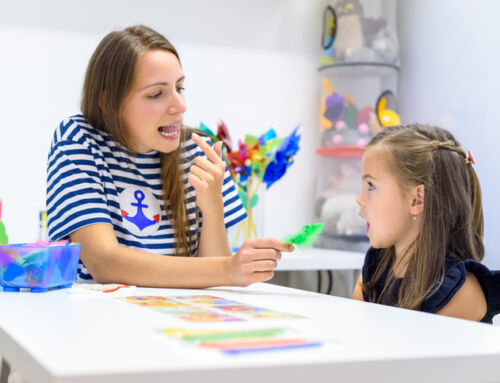Speech and language are essential for effective communication, and they play a vital role in a child’s overall development. However, some children have difficulty learning or using language due to impairments or developmental delays. This is where speech therapy West Covina comes in.
Speech therapy is a specialized intervention that attempts to enhance communication skills in people who have speech, language, or associated impairments. Speech therapy can be a significant tool in helping differently-abled children overcome communication obstacles and reach their full potential.
Understanding Differently-Abled Kids:
Differently-abled children are a broad group of people who may have a variety of physical, sensory, cognitive, or developmental disabilities. These disabilities can include conditions such as autism spectrum disorders (ASD), Down syndrome, cerebral palsy, hearing impairments, intellectual disabilities, and more. It’s critical to understand that each child’s strengths and needs are unique, and they may require varied levels of assistance.
When it comes to communication, differently-abled children frequently encounter unique challenges that limit their capacity to express themselves and engage in meaningful connections. These difficulties might present themselves in a variety of ways, including:
Speech Articulation: Some differently-abled children may have difficulty appropriately articulating sounds, resulting in unclear speech. They may struggle to coordinate the motions of their lips, tongue, and jaw to generate precise sounds, which might impair their understanding.
Language Development: Language acquisition and understanding in differently abled youngsters can be impaired. They may have delays or difficulties understanding and using spoken language, creating sentences, growing vocabulary, and successfully expressing their views.
Social Communication: Social communication skills, including non-verbal cues, turn-taking, and understanding social contexts, can be challenging for differently-abled kids. They may struggle to comprehend facial expressions, gestures, and body language, limiting their capacity to engage in conversations and form social bonds.
Augmentative and Alternative Communication (AAC) Needs: To address communication issues, certain differently abled children may rely on augmentative and alternative communication tools. Visual supports, sign language, communication boards, and electronic devices can all be used as part of these systems to help people express their thoughts and needs.
Sensory Considerations: Many differently-abled children may have sensory sensitivities that interfere with their communication. They may, for example, struggle to absorb auditory information or be sensitive to certain noises, which might impair their capacity to understand and respond to spoken language.
Understanding the unique needs and challenges of differently-abled kids is crucial in providing effective speech therapy interventions. Speech therapists who work with this population regularly have the knowledge and experience to diagnose and resolve these unique communication issues. They use a number of tactics and strategies to assist and improve communication skills, which are adapted to each child’s unique strengths and requirements.
We can ensure that differently-abled children have the support and tools they need to grow and realize their full communicative potential by recognizing and appreciating their various abilities and challenges. Speech therapy is critical in empowering these children to overcome obstacles, gain confidence, and develop effective communication skills, all of which will improve their overall quality of life.
Goals and Benefits of Speech Therapy:
Improve Speech Articulation: Many differently abled youngsters have difficulty appropriately articulating sounds. Speech therapists work with young children to help them acquire the exact muscle movements and coordination needed to produce fluent speech. To assist youngsters create accurate sounds and syllables, they use strategies such as articulation exercises, oral motor exercises, and visual clues.
Enhance Language Development: Speech therapy focuses on enhancing receptive and expressive language skills in differently-abled children. Understanding spoken words, sentences, and directions is referred to as receptive language, whereas expressive language refers to the ability to convey thoughts, feelings, and demands. To increase language understanding and expression, therapists employ a variety of tactics such as vocabulary building, sentence structure practice, and storytelling.
Foster Social Communication: Communication is not just about words; it also involves non-verbal cues, social interaction, and pragmatic skills. Speech therapy assists differently abled children in developing social communication skills such as turn-taking, eye contact, proper gestures, and deciphering nonverbal cues. These abilities allow youngsters to more effectively engage in meaningful conversations, build connections, and participate in social contexts.
Support Augmentative and Alternative Communication (AAC): For some children with severe speech impairments, speech therapy may involve the use of augmentative and alternative communication systems. These systems can range from basic graphic cards to complex technological devices that assist children in expressing their wants and requirements. Speech therapists are critical in assessing, implementing, and teaching the use of AAC techniques to support communication in children with disabilities.
Address Swallowing and Feeding Issues: Differently-abled children may have difficulty swallowing, chewing, or feeding in some situations. With their experience in oral motor skills, speech therapists can assess and suggest intervention options to address these issues. They help children to improve swallowing patterns, develop adequate oral muscle control, and promote safe and efficient feeding.
Stuttering Speech Therapy
Stuttering is a communication impairment in which the flow of speech is disrupted or interrupted. It can appear as sound or phrase repetitions, sound prolongations, or involuntary pauses during speech. Stuttering can have a negative impact on a person’s self-esteem, social interactions, and overall communication abilities. Individuals can, however, acquire techniques to manage and lessen their stuttering with the help of stuttering speech therapy, leading to better fluency and confidence. Here are some benefits to stuttering speech therapy:
Assessment and Evaluation: Stuttering speech therapy begins with a comprehensive assessment and evaluation conducted by a qualified speech-language pathologist. The therapist will learn about the person’s stuttering patterns, communication difficulties, and the impact of stuttering on their everyday life. This evaluation assists in determining the intensity and nature of the stuttering and serves as a baseline for assessing progress.
Identification of Goals: Based on the assessment findings, the speech-language pathologist collaborates with the individual to establish personalized goals for therapy. These objectives may include lowering the frequency and intensity of stuttering episodes, improving overall speech fluency, increasing communication confidence, and reducing negative emotional reactions associated with stuttering.
Techniques for Fluency: Stuttering speech therapy employs various techniques to promote fluency in speech. Fluency shaping is one such technique that focuses on altering the entire speech pattern to promote smoother and more fluent speech. Slower speaking rates, gentler sound start, and controlled breathing techniques may be used. Stuttering modulation is another strategy that seeks to improve stuttering episodes through the use of strategies such as voluntary repetitions or cancellations.
Cognitive-Behavioral Therapy (CBT): Stuttering speech therapy often incorporates cognitive-behavioral techniques to address the emotional and psychological aspects of stuttering. CBT helps people analyze and reframe negative stuttering ideas and feelings, fostering a more positive perspective and reducing anxiety about speaking.
Support and Counseling: Stuttering speech therapy offers a supportive environment where individuals can express their concerns, emotions, and challenges related to stuttering. Speech-language pathologists provide counseling and advice to clients in their communication journey to help them develop coping mechanisms, boost self-confidence, and build resilience.
Maintenance and Generalization: Stuttering speech therapy goes beyond the therapy room. Individuals are encouraged to apply the approaches and solutions they have acquired in different real-life settings in order to generalize their fluency skills. Speech-language pathologists work closely with individuals to guarantee long-term success by offering ongoing support and advice.
While stuttering speech treatment can considerably improve speech fluency, it may not completely eradicate stuttering for everyone. The goal is to improve communication efficacy, confidence, and overall well-being so that people can speak more freely and easily.
Collaboration and Individualized Approach:
Speech therapy for differently-abled children is a team effort that includes the child, his or her family, and a multidisciplinary team. To establish a complete approach to intervention, speech therapists collaborate closely with parents, teachers, occupational therapists, and other specialists. Individualized therapy plans are created to fit the specific needs of each kid, taking into account their strengths, problems, and objectives.
Get in touch with Speech Therapy West Covina Today!
Take the first step toward communication fluency with stuttering speech therapy West Covina! SGV Speech Therapy Solutions welcomes people of all abilities, ages, and backgrounds to our stuttering speech therapy programs.
Our skilled and caring staff is committed to assisting people of all abilities in overcoming stuttering and achieving confident communication. Don’t let stuttering hold you back; let’s find your voice together, one word at a time.







